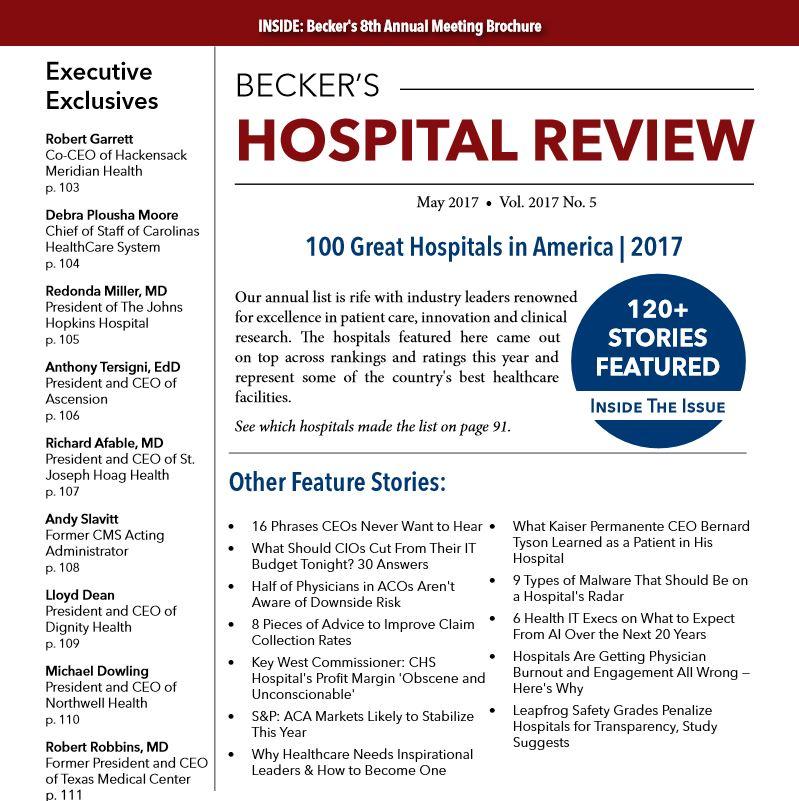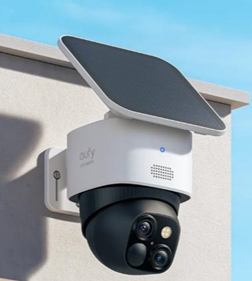The leader of Leapfrog, as well as the head of the Association for Professionals in Infection Control and Epidemiology, discussed current hand hygiene protocols and compliance, and why hospitals may not be meeting the standards.
Leah Binder, president and CEO of The Leapfrog Group, told Becker's that a top patient safety concern right now is hospital hand hygiene protocols and monitoring.
Ms. Binder said she knows Leapfrog has a tough hand hygiene standard and that amid the pandemic, some hospitals have asked the organization to loosen it. A diverse expert panel has revisited the standards, Ms. Binder said, and came to the conclusion that it is the absolute standard.
"Given the increase in resistant bacterial infection in hospitals, there has never been a more important time to practice excellent hand hygiene," Ms. Binder said. "It's the first line of defense, for patients and workers. While recognizing the stress that hospitals are under, hand hygiene still has to happen. Otherwise, we're putting lives at risk. Things are bad enough — let's not make it worse with bad practices."
Leapfrog's hand hygiene standard requires at least 200 observations per month. Most hospitals don't perform enough observations to capture a proper picture of their hand hygiene compliance, Ms. Binder said, adding that when hospitals start properly tracking hand hygiene, they generally find their rate isn't even close to what they thought it was.
"We recognize it takes time and effort and diligence, but it's lifesaving," Ms. Binder explained. "I can't stress enough that it's never been more important than now. Hospitals are in a stage of stress and the conditions for growth of infection are prime."

If hospitals don't have enough staff members to perform the observations, there is observance technology that can be used, Ms. Binder continued. Observing patterns of organizational behavior is very common in other industries, especially when there is safety at sake, she said. Though healthcare is a little late to the game, there are a number of options available. Leapfrog's hand hygiene standard doesn't require the technology, Ms. Binder clarified, but it does require a lot of effort.
So why aren't hospitals meeting the standard?
The Association for Professionals in Infection Control and Epidemiology, in alignment with Leapfrog, wants the highest level of hand hygiene compliance possible, though the organization differs on how it believes it should be measured, said APIC President Linda Dickey, RN. The association consists of 15,000 members, the majority of whom work in healthcare settings.
"Leapfrog has a real focus on the number of observations, and it takes a lot of resources to achieve that number," Ms. Dickey explained. "There are ways to achieve adequate appropriate hand hygiene without necessarily having to divert resources."
Some levels of observation may require a move to technology, and not all organizations have the resources to do that, Ms. Dickey said. APIC is looking at multiple ways to assess hand hygiene compliance, including technology. Having multiple measurement tools would be helpful for organizations, instead of having only one option, she said.
Ms. Dickey's main concerns right now are staffing shortages and staff fatigue. Both lend themselves to distraction from infection prevention and affect things like hand hygiene, she said. She also noted that, "Infection preventionists are running this marathon as well," and suspected there may be some turnover struggles, as found among other industries, and perhaps some difficulty finding strong, experienced infection preventionists.
The best thing organizations can do during this time is utilize infection preventionist resources wisely, Ms. Dickey advised. Some hospitals may have infection preventionists focusing on things that may not be their biggest problem, which is why all infection preventionists should do an on-ground risk assessment. Local risk assessments allow facilities to target their key infection problems, Ms. Dickey said.
Bottom line
"We, as the healthcare industry, have had so much distraction with so much focus on COVID-19 issues through staffing and supply, among other things," Ms. Dickey said. "It takes away from the focus on infection prevention. We really want to see infection numbers come down because the misery and death tied to healthcare-associated infections is still there."
"When hospitals demonstrate their commitment to hand hygiene, even when it's frustrating, it's also deeply reassuring to everyone," Ms. Binder said. "People need to know their lives are valued. That will carry them through the difficulties. The focus sends the right message — we are going to value your life, your life matters."









